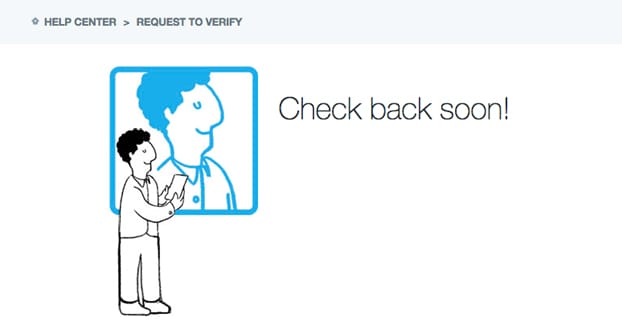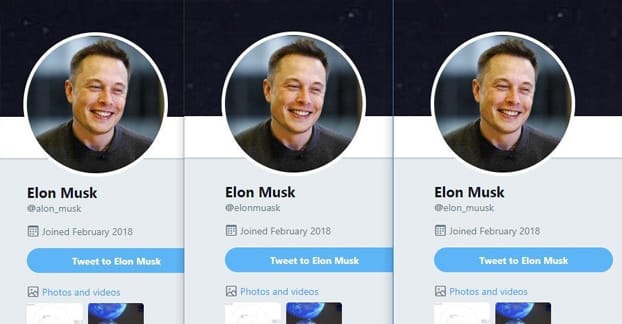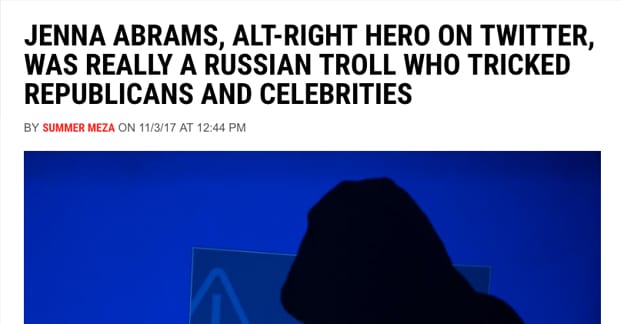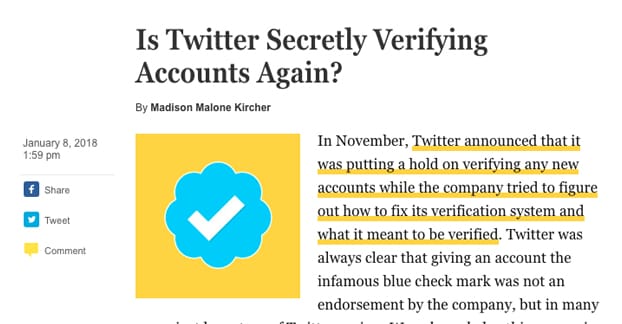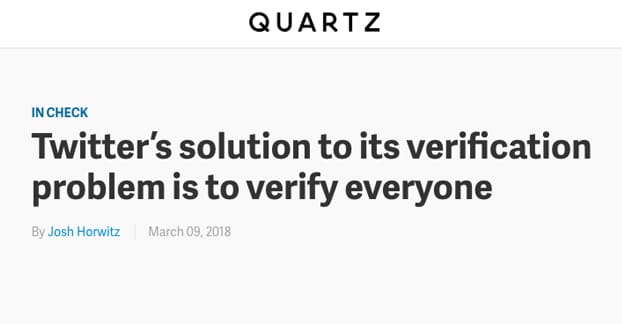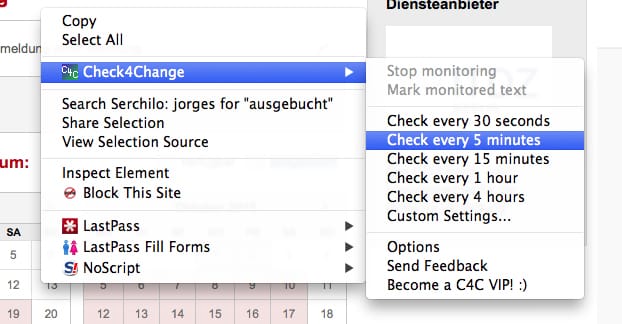By now I’m sure you’ve heard that Twitter has issues with their verification process, and that they’ve decided to restrict verification in general until they come up with a new system.
Twitter’s existing verification system has been a mess since day one, more or less. The original intent of the verification process was to validate the identity of an important person or account. Basically, they wanted to make sure that when you visit @POTUS you’re actually getting the words of the president, not someone who just made up the name, copied a profile picture, and is spouting whatever nonsense they want.
Twitter verification started in 2009. The manager at the time of the St. Louis Cardinals, Tony La Russa, was impersonated to his detriment. Other people, including actual celebrities at the time, also complained of impersonation. It was clearly a problem, and it was bad enough that Tony sued the social network. Verification was Twitter’s response.
The goal, of course, was a verification of identity. Twitter issued the checkmark to people who wanted to prove they were who they claimed, so there was an official marker of “this is the real account”. That way, users would be less likely to fall victim to an impersonator.
Impersonation is pretty dangerous on a social network. At the most basic level, someone could be impersonated by someone else looking to parody the person’s actions. That’s relatively benign, but it can get worse; the impersonator can say racist/sexist/hateful things and slander the name of the real person. In the case of a business, they could promote a link to a phishing site to steal user information or push fake news.
Hell, can you imagine if, without verification, someone made @ReaIDonaldTrump, made military threats against North Korea, and started a diplomatic incident? That would be crazy! Good thing the real account is verified and has never made stupid comments…
Anyway, the goal of verification at the outset was the verification of identity, but Twitter went about it in a few dumb ways. Most importantly, they very quickly stopped handing out verification to just anyone. It was only a short time before Twitter started implementing some hidden threshold for noteworthiness.
At this point, Twitter became an arbiter of opinion. As soon as verification ceased to be available to any person willing to submit documentation to prove their identity, verification started to mean more than just “this person is who they claim to be.”
Sure, it’s one thing to verify politicians and large-scale CEOs and other influential people. Those people tend to be the targets of impersonation that can do a lot of damage. That makes sense.
On the other hand, some “regular people” who became highly influential during the 2016 election and beyond, pushing alt-right ideology that has led to various hate crimes and even murders, turned out to not even be real.
Identity verification, as Twitter initially implemented it, could have helped prevent this. How much credit would people give an account like that if the majority of normal people were verified, but this one was not? Obviously, it would not have been verified because the owner could not submit valid documentation, due to the person not existing.
This is only part of the problem, of course. It’s entirely possible that the Russian propaganda agency responsible for such accounts could dig into dark web markets and steal identities wholesale. There are plenty of people who have had private information stolen from corporate leaks, so it could be difficult to stop from verifying accounts that have stolen information.
It’s easy to see why Twitter didn’t want to verify just anyone. Even if they’re a large company with thousands of employees, that’s nowhere near the manpower necessary to process verification applications from millions of site users. Having to process applications, verify documentation, and apply the checkmark to accounts would take so long that the backlog would reach months or even years in no time at all.
It was far easier for Twitter to simply stop issuing verification to people who weren’t sufficiently noteworthy. And, in so doing, they opened the way to massive problems.
Identity Verification versus Influence Verification
I’ve touched on the problem already, and touched on it before, but Twitter had a massive problem on their hands that they were in no way equipped to deal with. On the one hand, providing identity verification to a majority of users on their platform would be an insane task they didn’t have nearly the budget or the manpower to implement.
On the other hand, by limiting verification to only those people considered influential, Twitter reversed the definition. Verification no longer was about proving a person’s identity, it became proving a person’s notoriety.
Even this alone might not have been too bad, if Twitter simply applied the same standards across the board. The problem was, Twitter started using verification as a sort of reward. They would verify people who were active on the platform and had a certain level of notoriety, both on or off the platform. Then, if that person broke various policies – or had opinions Twitter disagreed with but which were not necessarily reflected in site policies – they would remove verification. Having your checkmark removed became a punitive measure, which assigned yet more value to it.
What Twitter did was made verification a sort of approval of the opinions that were professed by the people who have verification. This is, again, fine for the majority if users. The problem comes when people like Milo, people like Jason Kessler, people like Alex Jones have verification. These people defend pedophilia, incite hate crimes, and promote racism. They may couch it in different terms – very few people in the “white nationalist” movement will openly admit to sharing the ideals of the KKK or the Nazis – but when the Venn diagram of their ideologies is a circle, it’s pretty clear what’s going on.
Fake News, Purges, and New Verification
This all has been building as a problem for years, but it has all come to a head with the various hate crimes, the issues with fake news and Russian propaganda, and verification. Twitter has been forced through circumstance to address the problem, and they have been doing what they can, even if it’s all too little, too late.
Addressing each problem in turn, Twitter has been removing verification from a lot of accounts that violate policies against hate speech, bullying, and other kinds of aggressively dangerous rhetoric. Their purge has been incomplete, and a lot of these accounts are allowed to stay active on the site, but they no longer have verification.
This is not a solution, by far. It’s still Twitter using verification as a punitive measure, and that’s something they need to address.
Additionally, Twitter has been purging accounts known to be Russian propaganda machines, or otherwise fake accounts broadcasting fake news. Plenty of accounts have existed that are not run by real people, but benign bot accounts are perfectly fine. There’s a tangible difference between a bot that responds with airline status codes when messaged a flight number, an account like Swift On Security that is not run by Taylor Swift despite claiming to be, and an account like Jenna Abrams, fake and controlled by an external government looking to cause chaos within a different country.
For the moment, Twitter has largely suspended the verification program. The page that used to host the verification form is empty with a message to check back later. Jack, though a livestream, talked about revamping the entire verification process.
That said, as of right now, verification still exists. Celebrities, politicians, and almost everyone who was verified before all this started happening still has their happy little blue checkmark beside their name. Now and then, someone violates enough policies through their speech that Twitter removes their verification and/or bans them, and verification is obviously removed from fake accounts that are deleted, but it’s all minor fluctuations.
There are also scattered reports that some accounts are receiving verification even though verification has been removed as a process. Michael Wolff, a suddenly relevant author; Mick Mulvaney, director of the consumer financial protection bureau; and one of Fast Company’s editors were all verified in 2018, despite verification being suspended in the previous November.
It makes sense, in a way. As long as Twitter has the verification process, they might as well use it very carefully to validate identities of people who are suddenly important. It’s still an identity verification method, so it still holds the anti-impersonation power it was meant to have, Twitter just needs to be very careful with how they choose who to verify.
What the Future Holds
The question of the day, though, is what Twitter is going to do. Either they need to remove the blue checkmark and implement a brand new icon for verification that validates identity and nothing more, or they need to open verification up to anyone willing to implement identity validation with their account. The second option seems to be the one most commonly called for, as it’s the top response to Twitter’s announcement and is the subject of the most common blog posts.
There are, of course, potential problems with opening up verification to everyone. The primary problem is, of course, the immediate requirement of a process that can validate an identity without being used by those who make fake accounts. There aren’t very many ways to validate an identity that can’t be spoofed.
You might think a two-factor authentication would work, but how often have you received a spam call from a number that looked legitimate but wasn’t? It’s so easy to fake a phone number that it’s basically meaningless. So many social security numbers have been leaked through Equifax’s breach that practically anyone can buy a huge list to use, if they know where to go. I imagine that, should verification be opened to everyone, it will quickly become abused through identity theft and other workarounds.
This is, of course, why verification is not available while Twitter grapples with the problem. I fully anticipate some half-assed solution to roll out before the end of the year, while Twitter grapples with the problem and fails to identify every avenue of attack. Whether or not they fix it and provide something actually useful remains to be seen.
Checking for Verification
If you’re interested in checking when verification comes back, you have a few options.
The first thing you can do is follow the @verified account that I linked up above in the “Twitter’s announcement” link. If you follow the account and then enable mobile notifications for it, you’ll be able to get a notification when verification is announced. I imagine that Twitter will use that official channel as one of many avenues of letting people know about the new process.
Another option you have is to watch the verification page URL. That page is https://verification.twitter.com/welcome, and I bet when a new verification process is rolled out, that page will update. You can either check it manually daily or weekly or what have you, or you can create some kind of page crawler to check for changes to the page. Browser add-ons like Check4Change can do it for you as well.
You can also just… go about your business. There’s no reason to know the minute verification comes back unless you’re intending to be among the first thousand people to write about it on your blog, and chances are you’ll be sniped by the people who have contacts in Twitter anyway. If you really want to keep your finger on the pulse, you can monitor various social media marketing blogs, and even Twitter’s news blog itself, and keep an eye on whenever they post a new update about it.
In the mean time, you can try to prepare yourself for verification. Depending on how Twitter implements it, you might need to have an actual real photo, a real name, and a confirmed phone number added to your account. That may or may not be necessary, but we’ll have to wait to find out.
